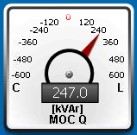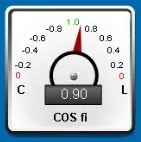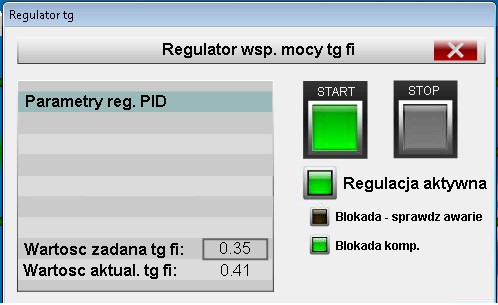Those responsible for purchasing electricity in industrial plants face the issue of compensating the reactive power drawn from the utility's grid. As is well known, the large number of motors deployed at the plant requires the supply of a large amount of inductive reactive power.
Large values of reactive power cause an increase in current in the wires feeding the plant contributing to increased losses and even overloading of the power grid. An additional not infrequently more serious issue is to keep the plant's tgφ value within the limits, set by the Power Company. Exceeding the value of this parameter results in severe charges by the Power Company.
A popular solution used in many plants is the use of capacitor banks to compensate for reactive power. This is a good solution, but it is fraught with drawbacks. The first problem is the lack of precision of such regulation, caused by the limited number of stages of capacitor banks, the second problem - resulting from step regulation - is the risk of overcompensation of the network. The third problem is the risk of resonance phenomena, especially in the vicinity of receivers with converters.
Customers with on-site cogeneration generators are often unaware of another possibility: the use of a synchronous generator alternator as a so-called rotating capacitor. A properly selected generator, in a properly designed plant, offers two possibilities for power factor control. The first possibility is to configure the generator's excitation regulator in such a way that it can operate with a power factor cosφ different from unity.

In such a configuration, the alternator can produce the reactive power required for the operation of inductive loads. For the grid, it will therefore be the equivalent of a capacitor with a value that varies in proportion to the active power output. This solution is relatively simple, but it is still fraught with disadvantages, because with the changing reactive power demand of the consumers in the plant, there is still a real risk of overcompensation of the network.

A much better solution is the active reactive power control system recently implemented at one of our customers. This system, based on measurements from the network analyzer installed at the plant's connection, modifies the operation of the generator excitation system in such a way as to maintain the plant's tgφ value at a preset level. Thanks to this solution, the amount of reactive power produced by the generator is smoothly adjusted to the current demand of consumers in the plant's network.

Our engineers recently implemented such a solution at one of our clients. The system delivered by CES has been integrated with the cogeneration system's instrumentation and control equipment, allowing the user to change the reactive power regulator settings at any time and to view the plant's current tgφ values and the parameters of the energy produced by the generator.

Adding these variables to the SCADA system's trends allows you to observe the system's operation on convenient graphs, making it easier to analyze the quality of the system's work.
The cogeneration systems supplied by CES are becoming more and more technologically advanced. They have increasingly improved control and regulation systems. This provides opportunities to effectively develop them with new options not used before. The solution developed by our engineers can also be applied to older systems under certain conditions.
